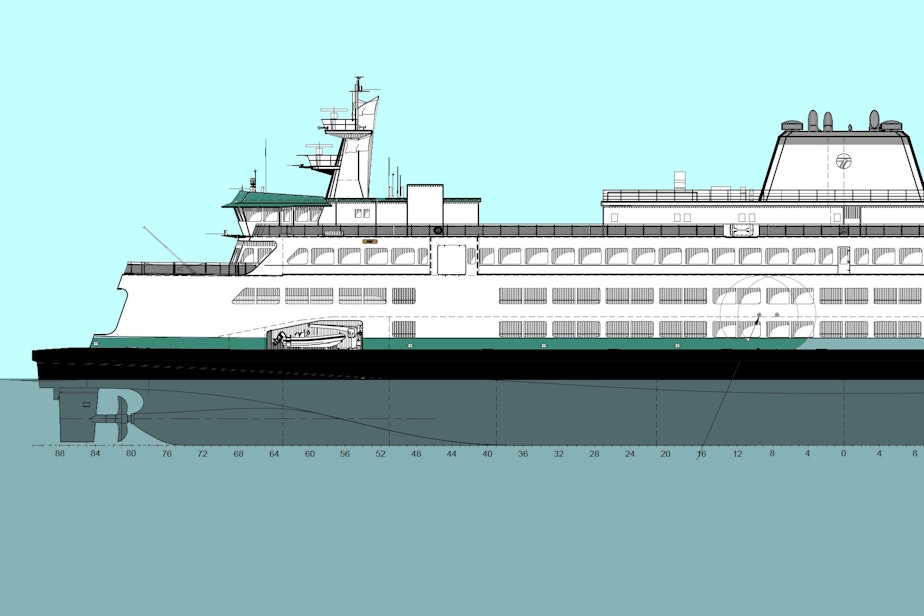A sneak peek at Washington's planned hybrid electric ferries

Washington state put five new ferries out to bid this week. That means shipyards may compete for the right to build them. A look through the plans reveals similarities to the old ferries, new details, and big changes under the hood.
This week, we got a look at what Washington State’s new electric ferries will look like. That’s because the state released some design details when it put the project out to bid Thursday.
RELATED: Could opting for diesel-powered over electric ferries get Washington new boats faster?
The new ferries look a lot like the old ones. Same colors, same profile. On the passenger deck, they’ll have a cafeteria, tables along the sides, and those two-pronged decks on either end known as “pickleforks.”

The pickleforks are built that way - with a cutaway section - to allow the pilot a clear view of the ramp below. But sometime back in the olden days, someone thought they looked like the perfect utensil for spearing pickles.
Sponsored
The rows of seats that face the front and back windows will be under a covered area outside on the picklefork. That means the best seats in the house will offer a bracing experience.

The new boats are 47 feet longer than the old ones. That makes them heavier, but also more buoyant and therefore more efficient, in the same way a canoe is more efficient than a rowboat.

But the real changes are under the floor. While a low-emission diesel engine can power the boat as a backup option, the real power comes from two rooms packed full of dozens of stacked batteries, which drive the propulsion system. These can be swapped out as they age, or as battery technology improves.
Sponsored
The state will further refine the ferry plans in the coming weeks, releasing them before bids are finalized.
Heavy competition
The right to build Washington's next five ferries is going through a competitive bidding process.
In the past, ferries built for Washington state had to be built in Washington.
But state officials wanted a more competitive bidding process, so they opened it up to shipbuilders across the country.
Sponsored
Now, Puget Sound shipyards must compete with cheaper labor in southern states.
Matt von Ruden is in charge of the bidding process.
He says Washington state has more environmental laws, plus a requirement that shipyards have apprentice training programs.
"And because Washington can't impose all those things on shipyards outside of the state, we have this 13% credit that helps level the playing field," he said.
That credit is like a golf handicap, in Washington’s favor. An in-state shipyard can still win the contract, even if its bid comes in 13% higher.
Sponsored
Von Ruden says 13% is probably about right, because he's seen interest from both in-state and out-of-state shipyards.
Correction June 6, 2023, 9 a.m.: The diesel engines will be comparable in size to the old diesel engines on earlier boats, rather than smaller, as previously stated. The new engines will be "Tier Four," which the Environmental Protection Agency defines as having "advanced emission control technologies."




